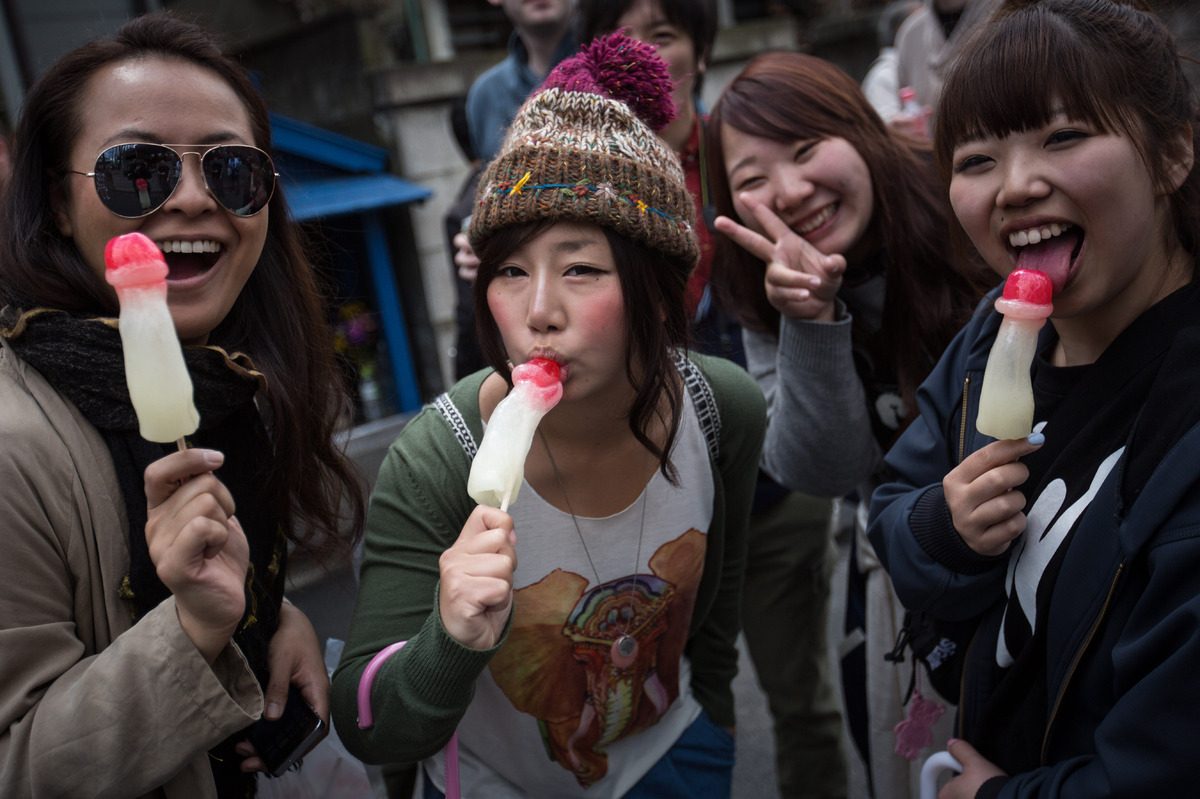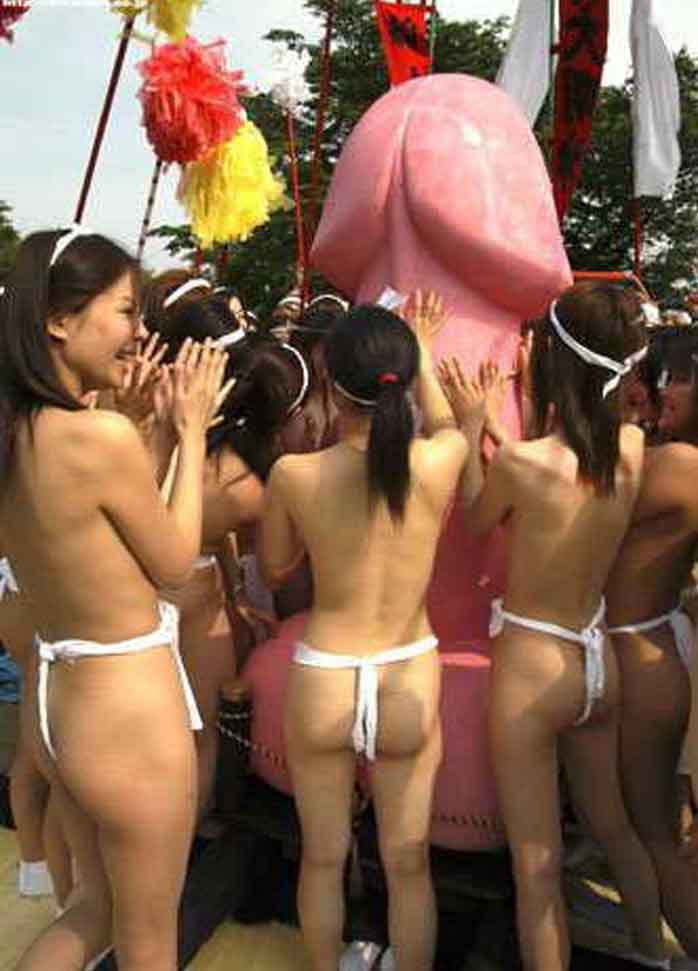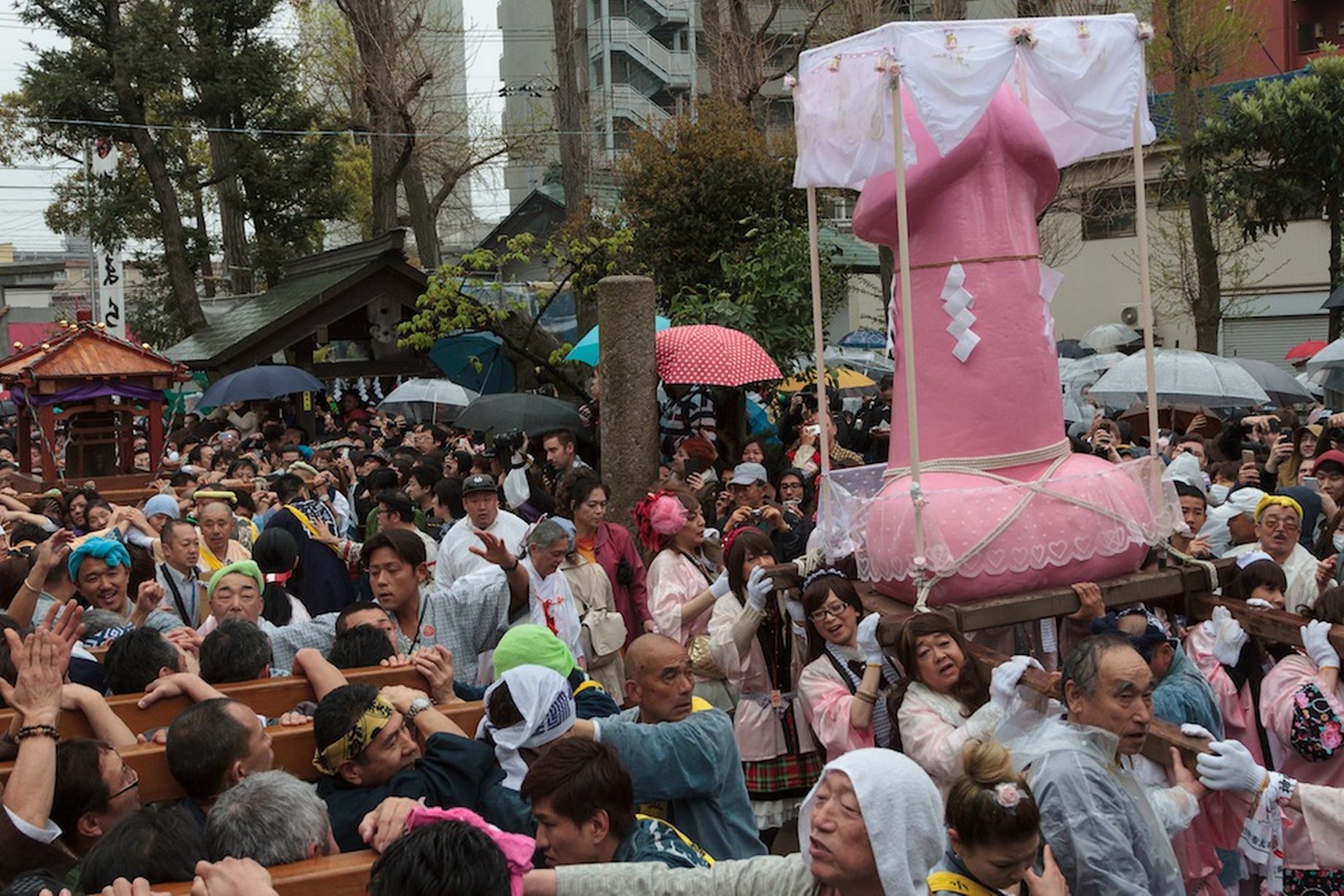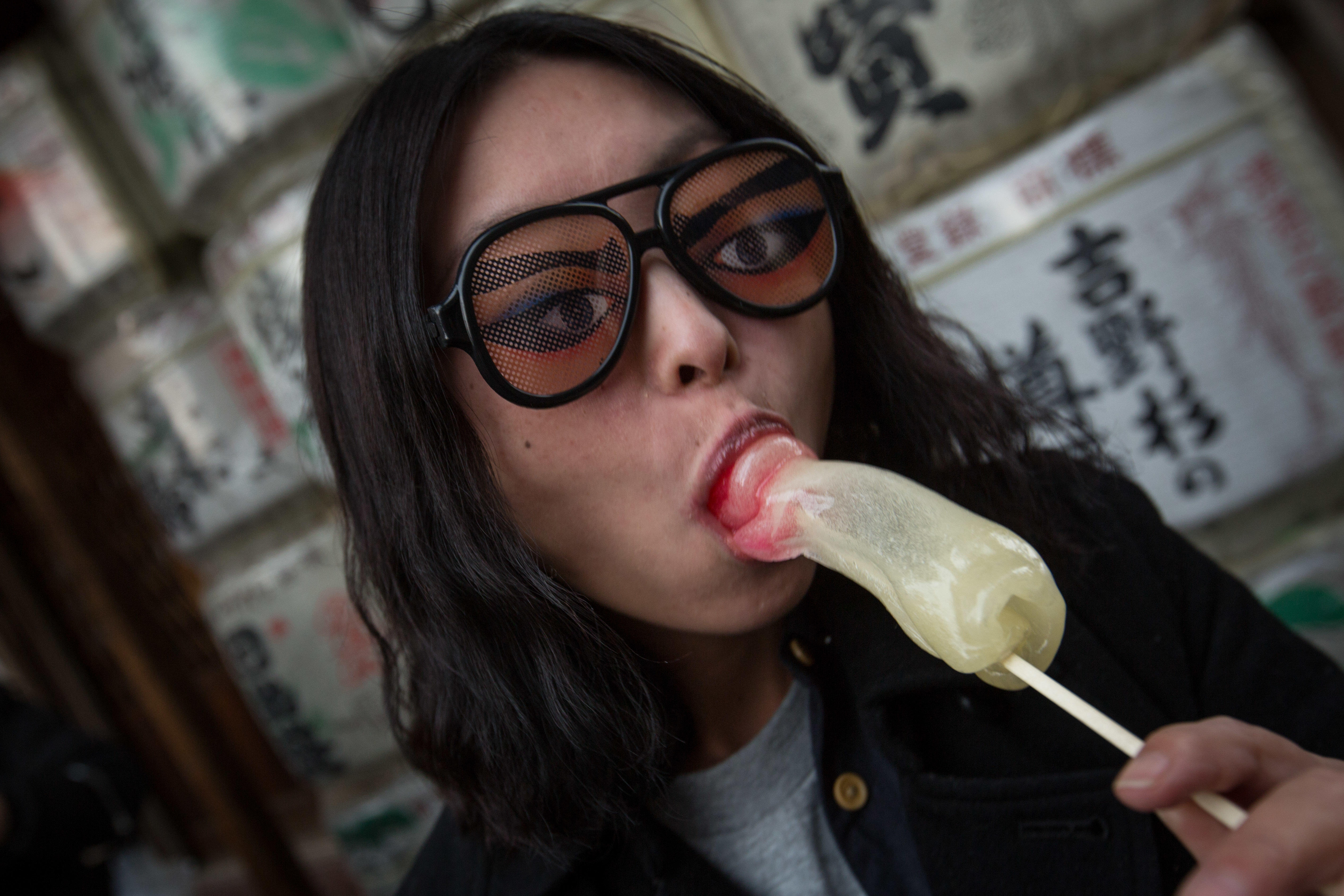If you are feeling cocky you should visit these penis shrines and festivals in Japan!
When one thinks of sculptures involving penises, Michelangelo’s Statue of David, or some other Italian sculptures likely come to mind. However, not surprisingly, Japan actually has quite a few sculptures of not only the penis itself, but lady privates as well! Before we move on though, it is important to note that the reasons behind all of this in Japan are actually not related to anything kinky or freaky, but rather have very important meanings and symbols.
1) What They Are?
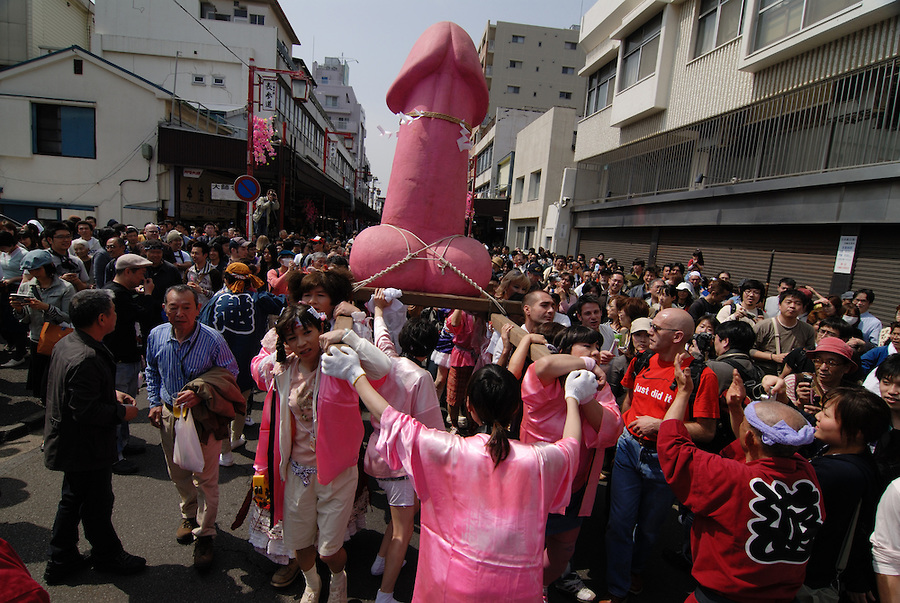 Penis sculptures, penis figurines, penis statutes, penis everything! Essentially, these are related to two things: one, the Kanayama Shrine in Kawasaki, Japan; and two, the annual Kanamara Matsuri Festival held there. Indeed, the shrine and its annual festival offer some very unique experiences. For instance, in Japan it is customary to rinse one’s hands once arriving at a shrine; here, the faucet is shaped like a penis! Also, the shrine sells amulets and lucky charms in the shape of a penis. If you go to the festival, you will see many people walking around with penis shaped objects in their mouth – I am talking about food of course! Yes, there are penis shaped lollipops and bananas covered in penis molded chocolate.
Penis sculptures, penis figurines, penis statutes, penis everything! Essentially, these are related to two things: one, the Kanayama Shrine in Kawasaki, Japan; and two, the annual Kanamara Matsuri Festival held there. Indeed, the shrine and its annual festival offer some very unique experiences. For instance, in Japan it is customary to rinse one’s hands once arriving at a shrine; here, the faucet is shaped like a penis! Also, the shrine sells amulets and lucky charms in the shape of a penis. If you go to the festival, you will see many people walking around with penis shaped objects in their mouth – I am talking about food of course! Yes, there are penis shaped lollipops and bananas covered in penis molded chocolate.
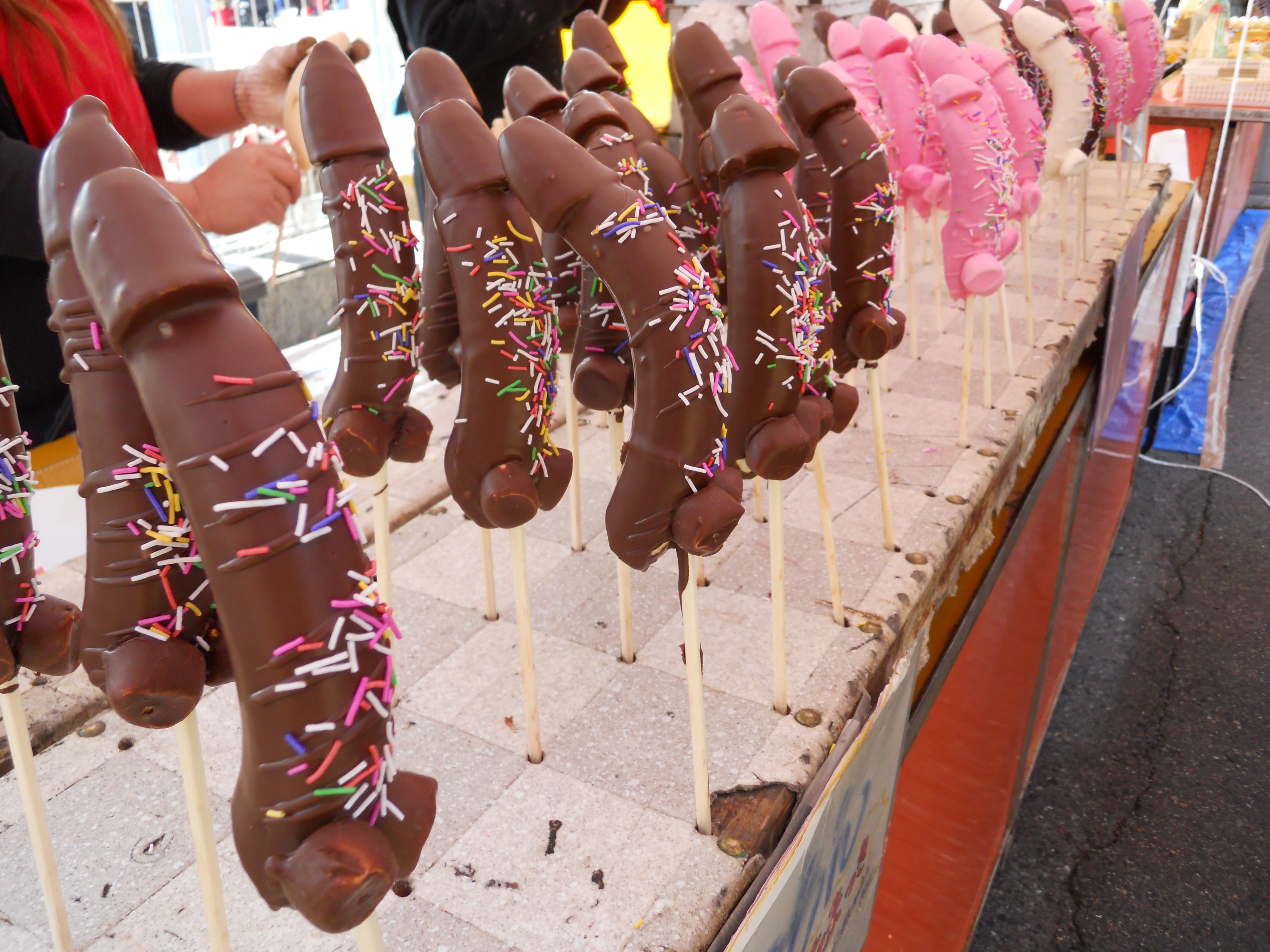
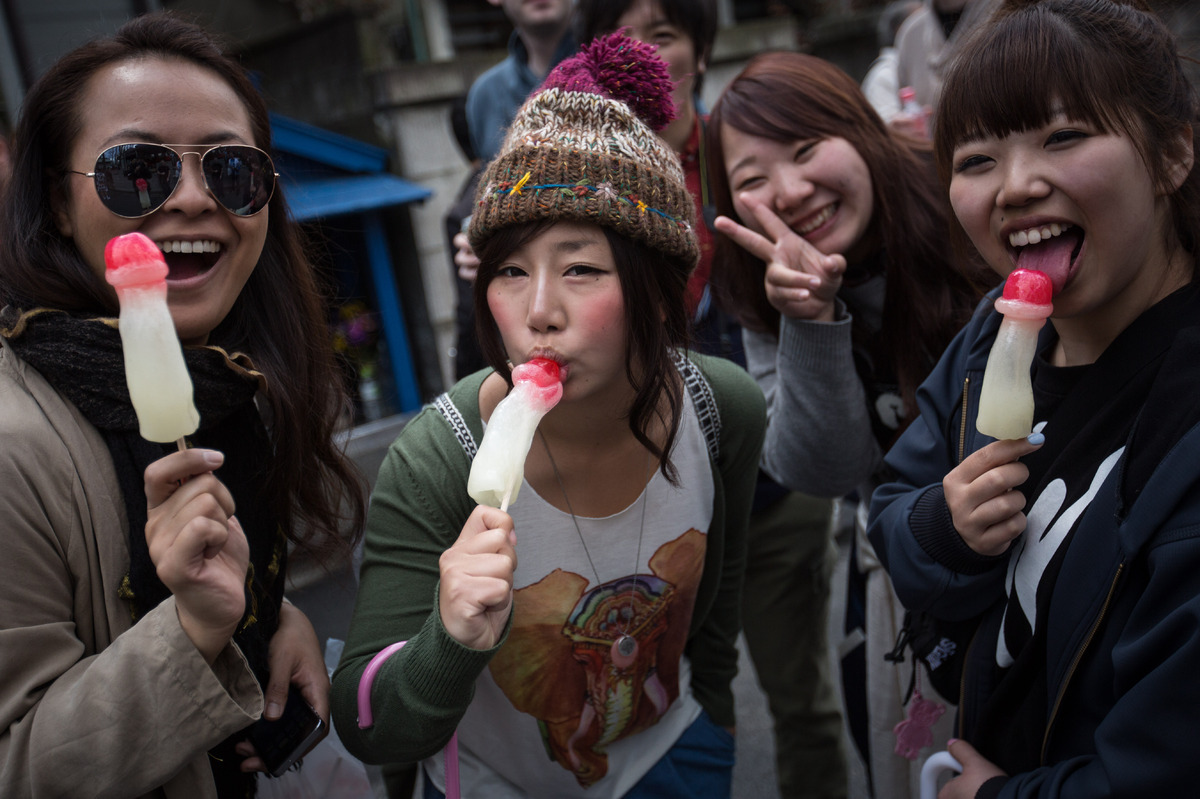
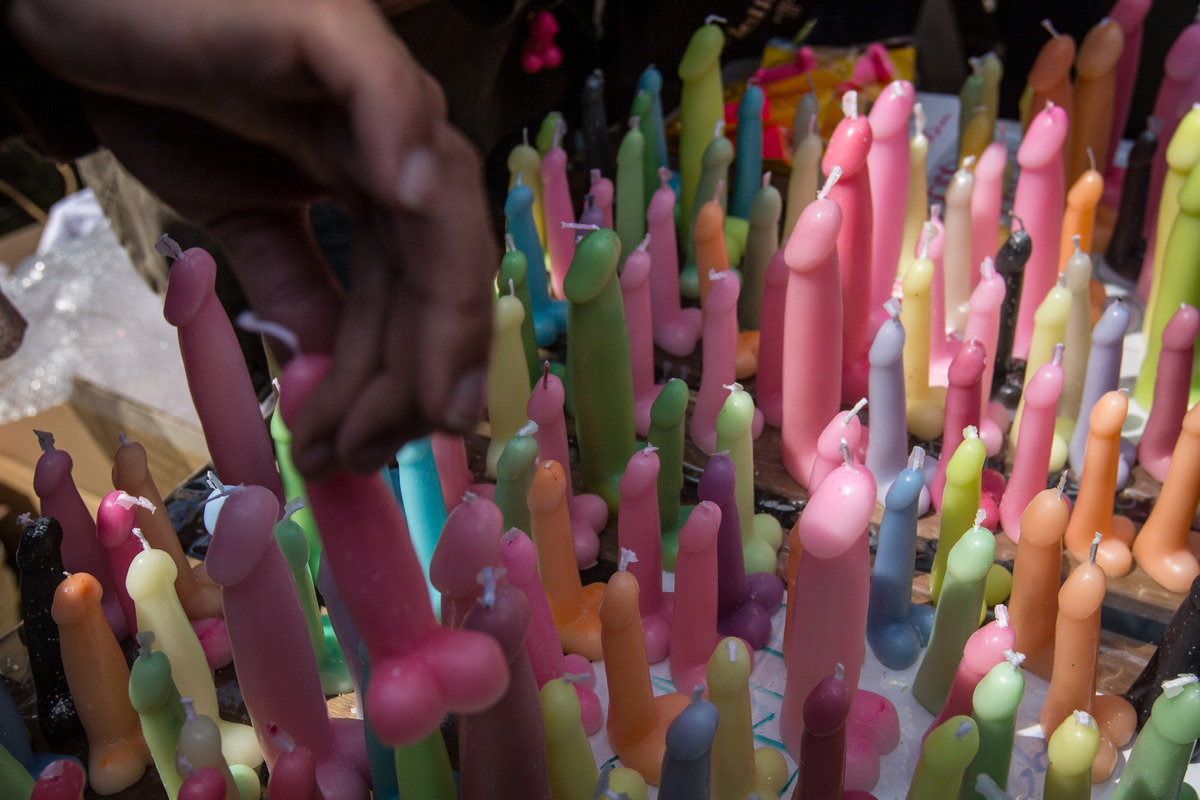 At the shrine, there are statues that are penis and gonad shaped objects that you can touch or rub in a certain way (the reasons for this in the next section). During the festival, shrine workers carry around portable phallic (erect penis shaped) shrines.
At the shrine, there are statues that are penis and gonad shaped objects that you can touch or rub in a certain way (the reasons for this in the next section). During the festival, shrine workers carry around portable phallic (erect penis shaped) shrines.
2) Why they have all of this
The Kanayama Shrine got its start in the 17th century. Prostitutes were said to pray at the shrine for protection from Sexually Transmitted Diseases. As the shrine evolved, it became known as a shrine offering not only protection from STDs, but good luck with fertility, prosperity of offspring, marriage harmony, and safe delivery of a baby for pregnant woman.
The festival, Kanamara Matsuri, translates to “Festival of the Steel Phallus” and has a story behind it too. As the legend goes, a demon wanted the companion on a young woman. She denied the demon so the demon decided no other man could have her either and thus hid inside of her vagina with its sharp teeth. The woman married another young man, but the man was castrated by the demon on their wedding night. When she tried to marry another man, it happened again. At this point, the woman asked a local blacksmith for help. His solution was to fashion a penis out of steel that would crush the demon’s sharp teeth when it tried to bite. Well, it worked and the woman was finally able to move on with her life. Today, the festival continues to celebrate the banishment of the demon while also bringing attention to the shrine. Indeed, both focus on raising money for HIV and AIDS research in addition to the beliefs about the shrine’s fertility and protective benefits mentioned above.
3) Are there any women’s shaped sculpture in some of shrines?
Yes, there is! At the Ooagata Shrine in Japan, there is a shrine that houses natural rocks in the shape of a vulva. The rocks are completely unmolded and natural which adds to their perceived spirituality. This shrine is close to the Tagata Shrine (both are in Nagoya, Japan), which houses more enshrinement of the male counterpart – you guessed it, the penis. Every year, these two shrines hold yet another festival, the Honen-sai, which is essentially a festival for bringing a prosperous harvest, fertility, and a prosperous marriage and family. The roots of these shrines and the festival go back over one thousand years and he privates are symbols of new life, as they are used literally to create new life. Ironically, as sexual as Japan may seem, it really did not get so sexualized until interaction with the Western world. Thus, the Honen-sai for instance even with penis and vagina images, rocks, and statues, was never an event about sex per se, but rather life, marital harmony, and fertility. The festival and the shrines have tried to continue this tradition and therefore still encourage touching and rubbing of the portable statues to symbolize a prosperous relationship, fertility, etc…
4) People from all over the world are interested and seem to have fun with it!
Though these shrines and their festivals appear very peculiar at first glance by most foreigners to Japan, once people learn of the meaning behind everything, they suddenly don’t seem so kinky and everyone visiting, both Japanese and foreigner, have a lot of fun with it all. The festivals have gotten a lot of media coverage from all over the world and are thus now very popular. As a result, a lot of money is raised for good causes such as HIV/AIDS research, and many have fun with probably their only time touching or sucking on a “penis” in public!
Written by Risa Clark
